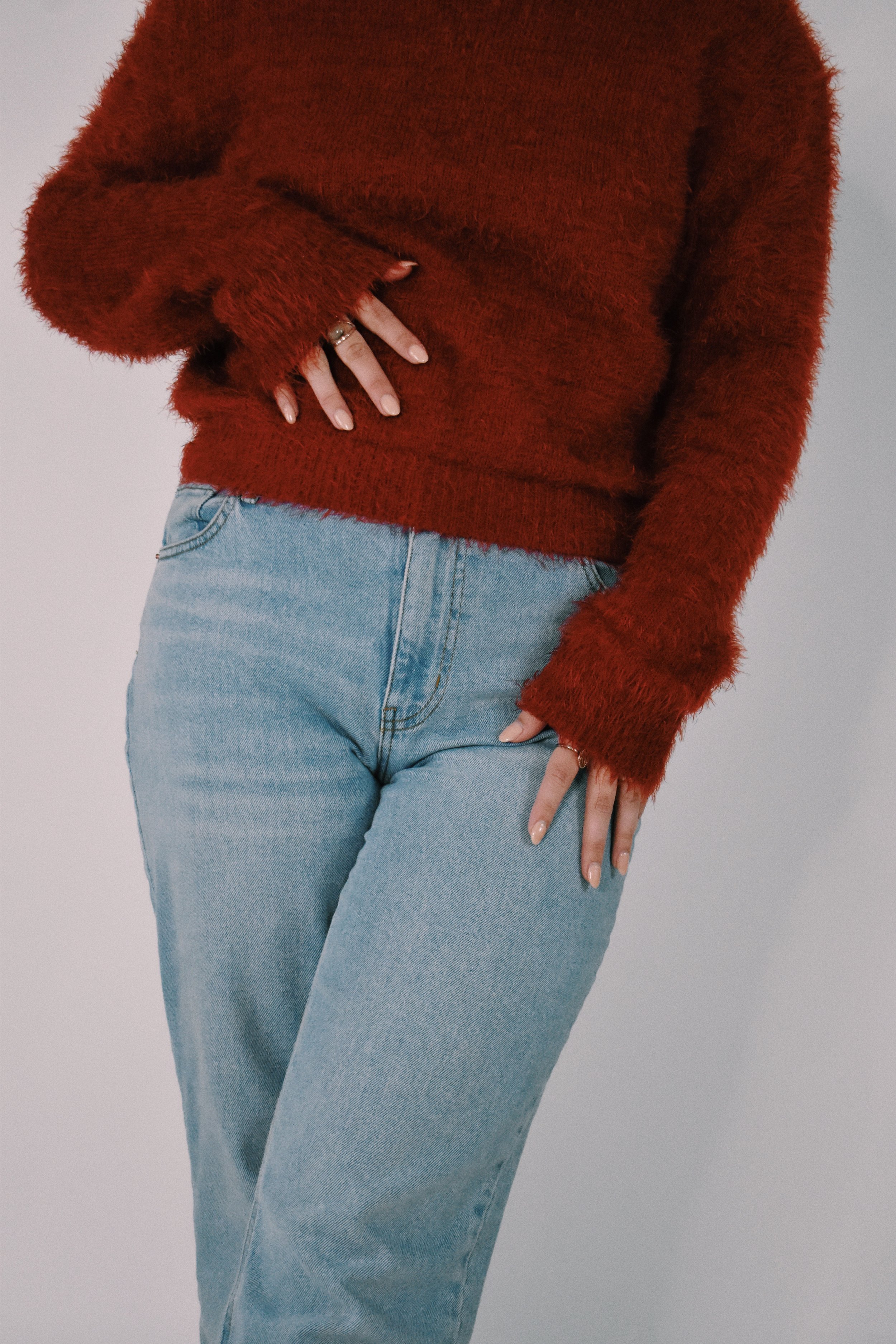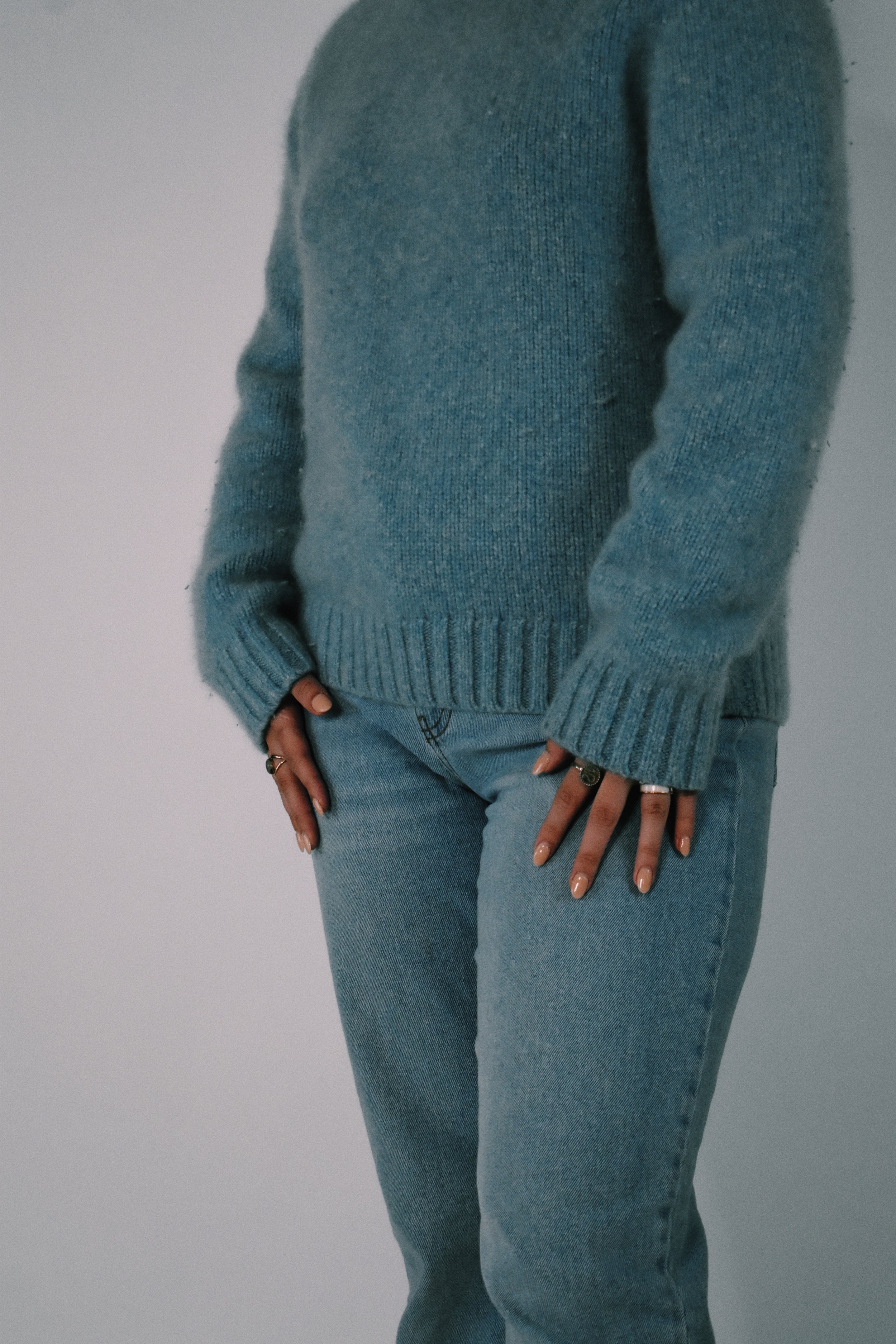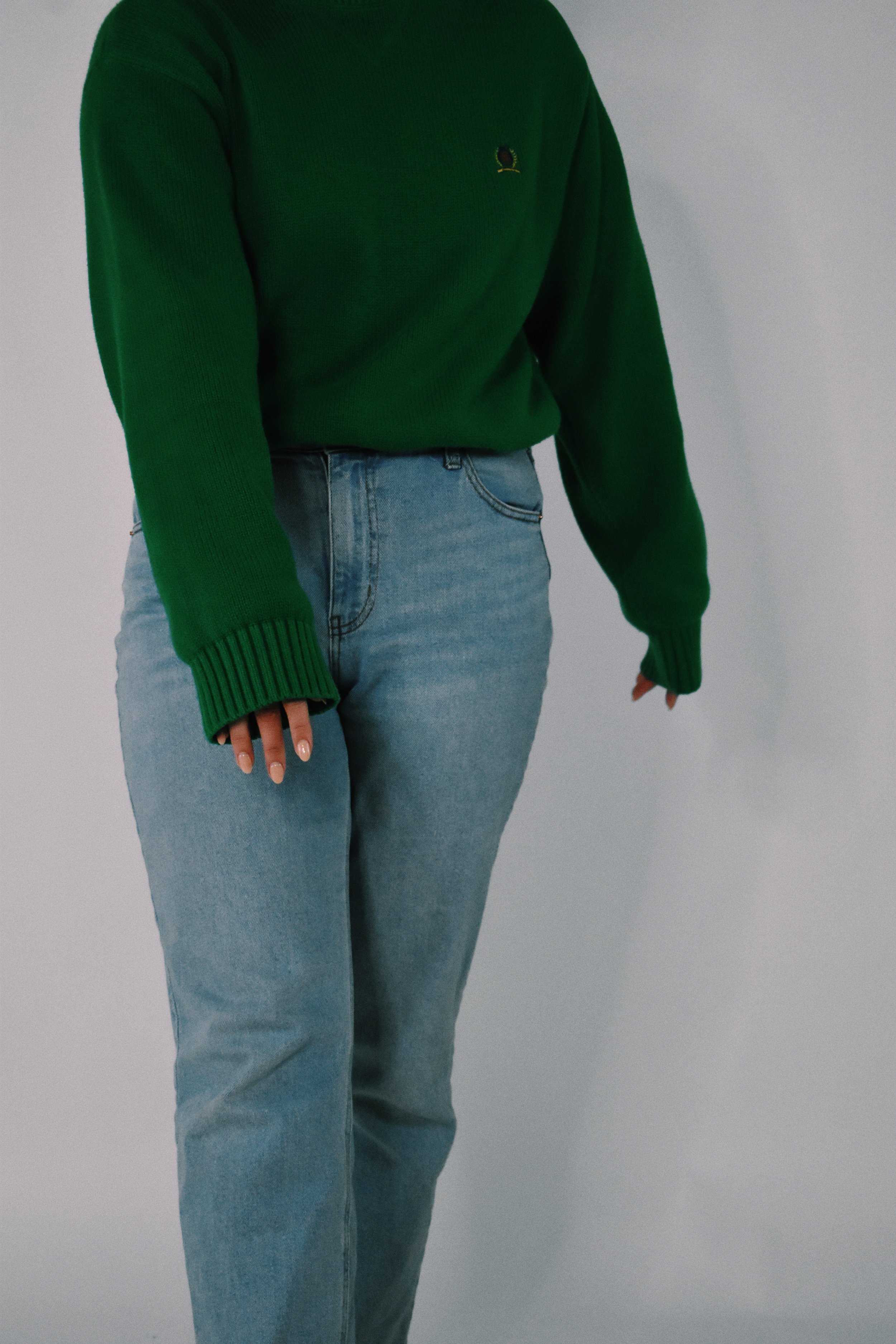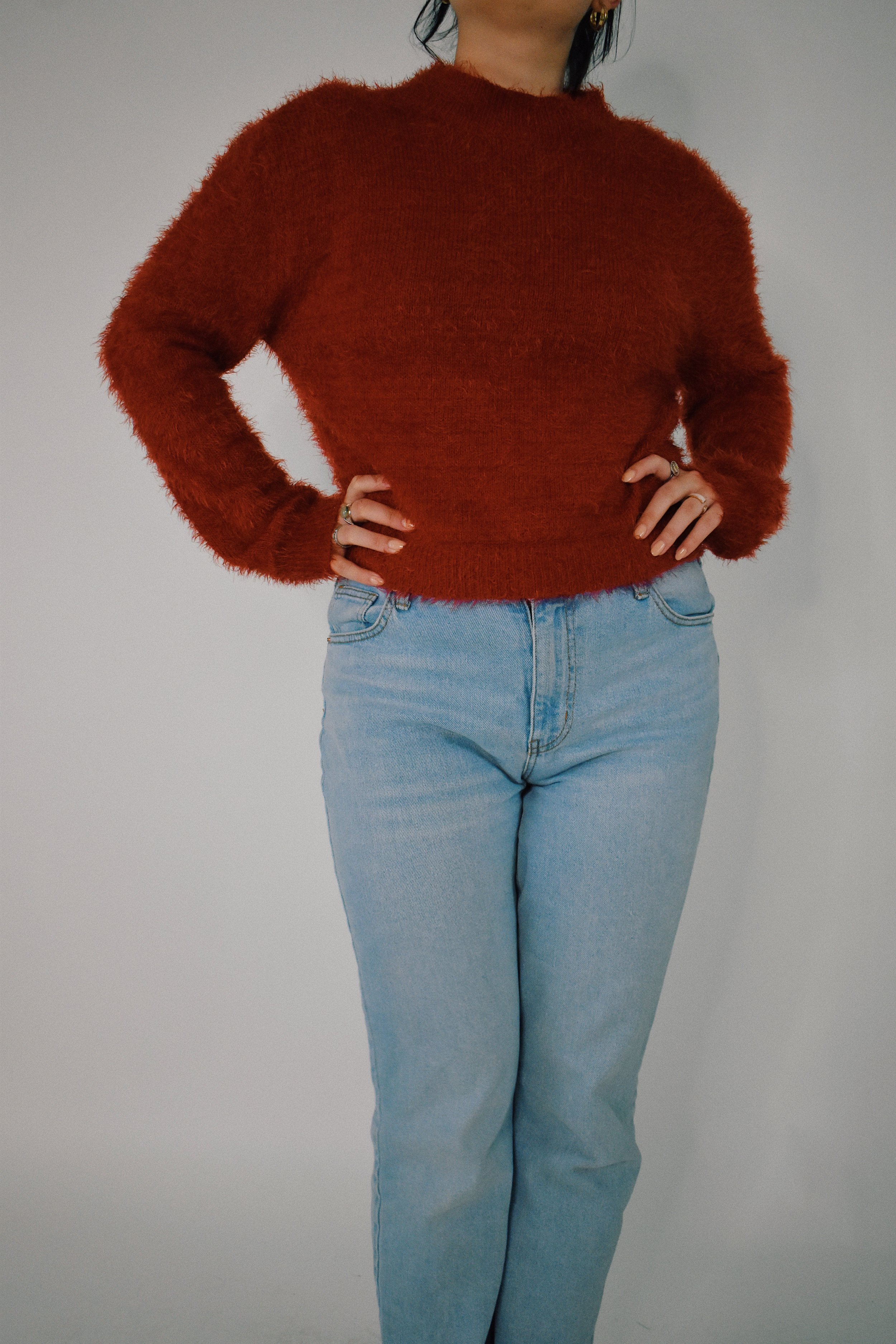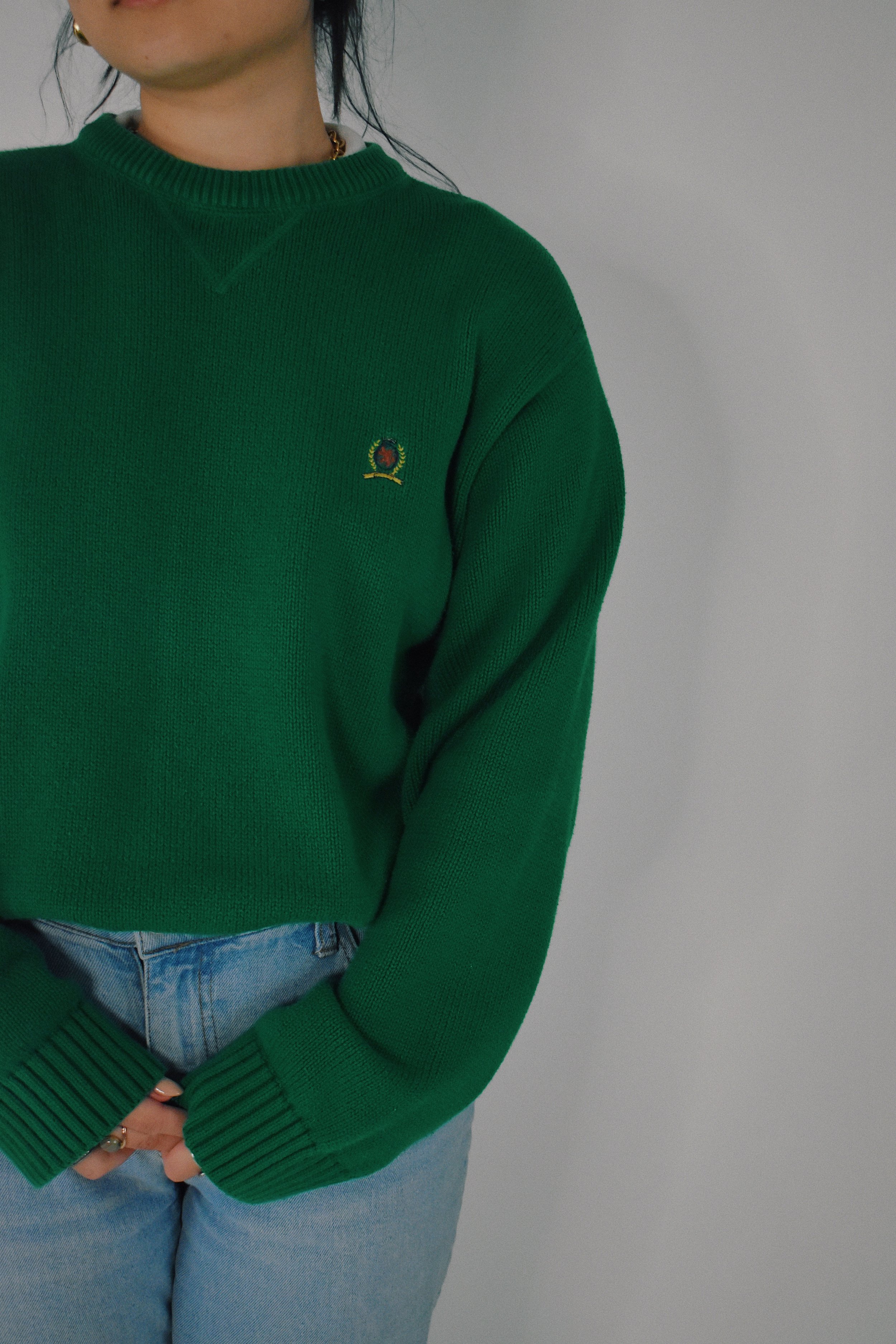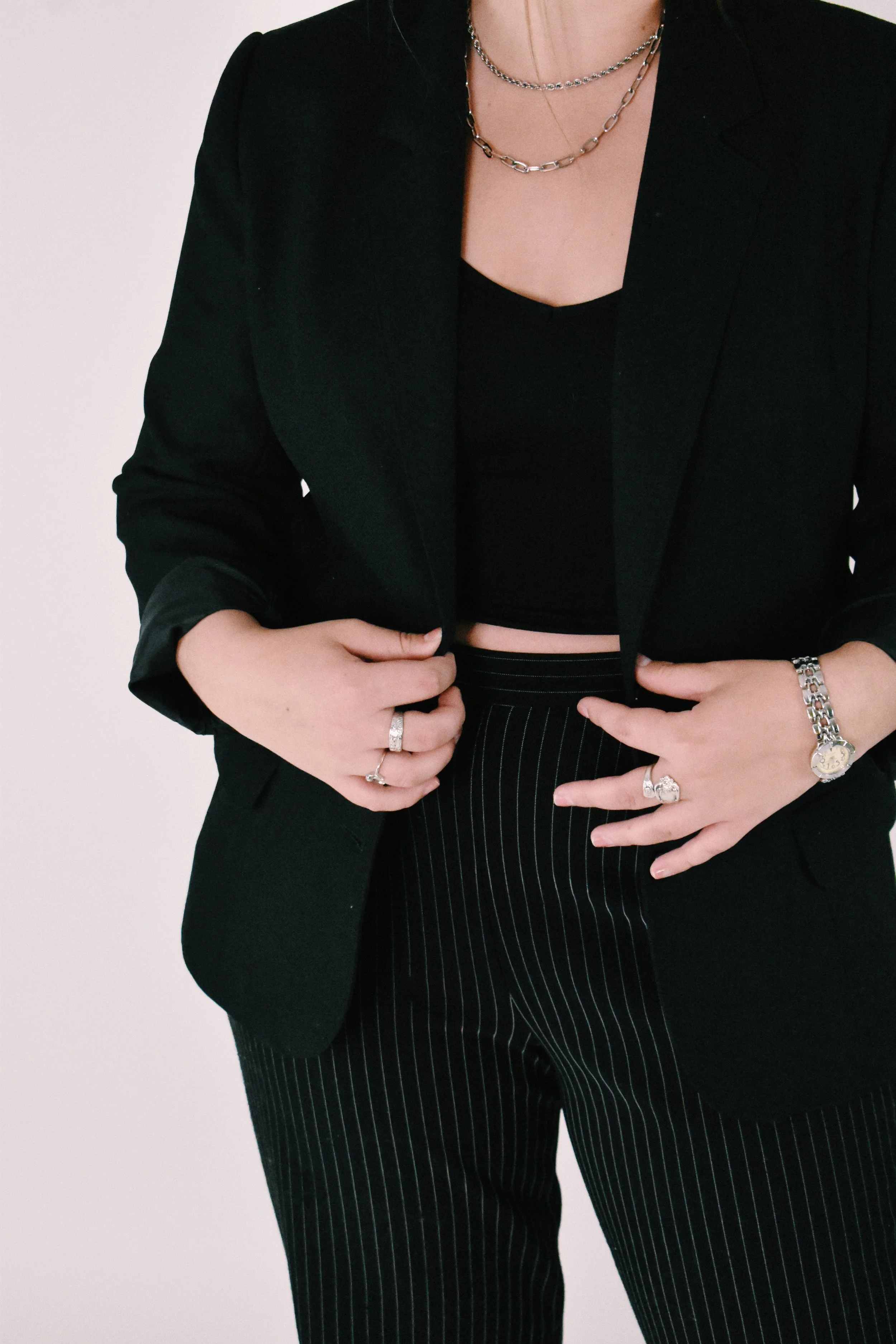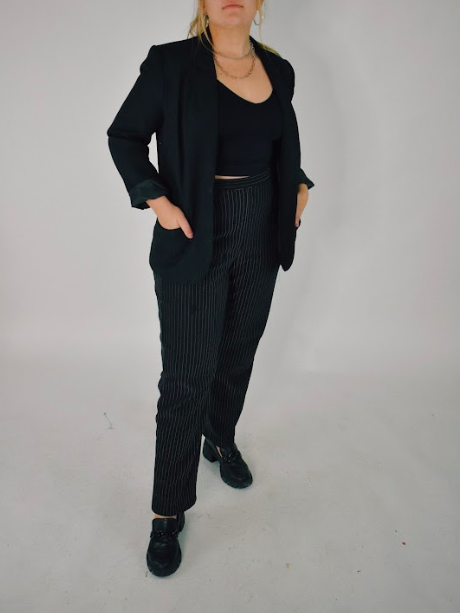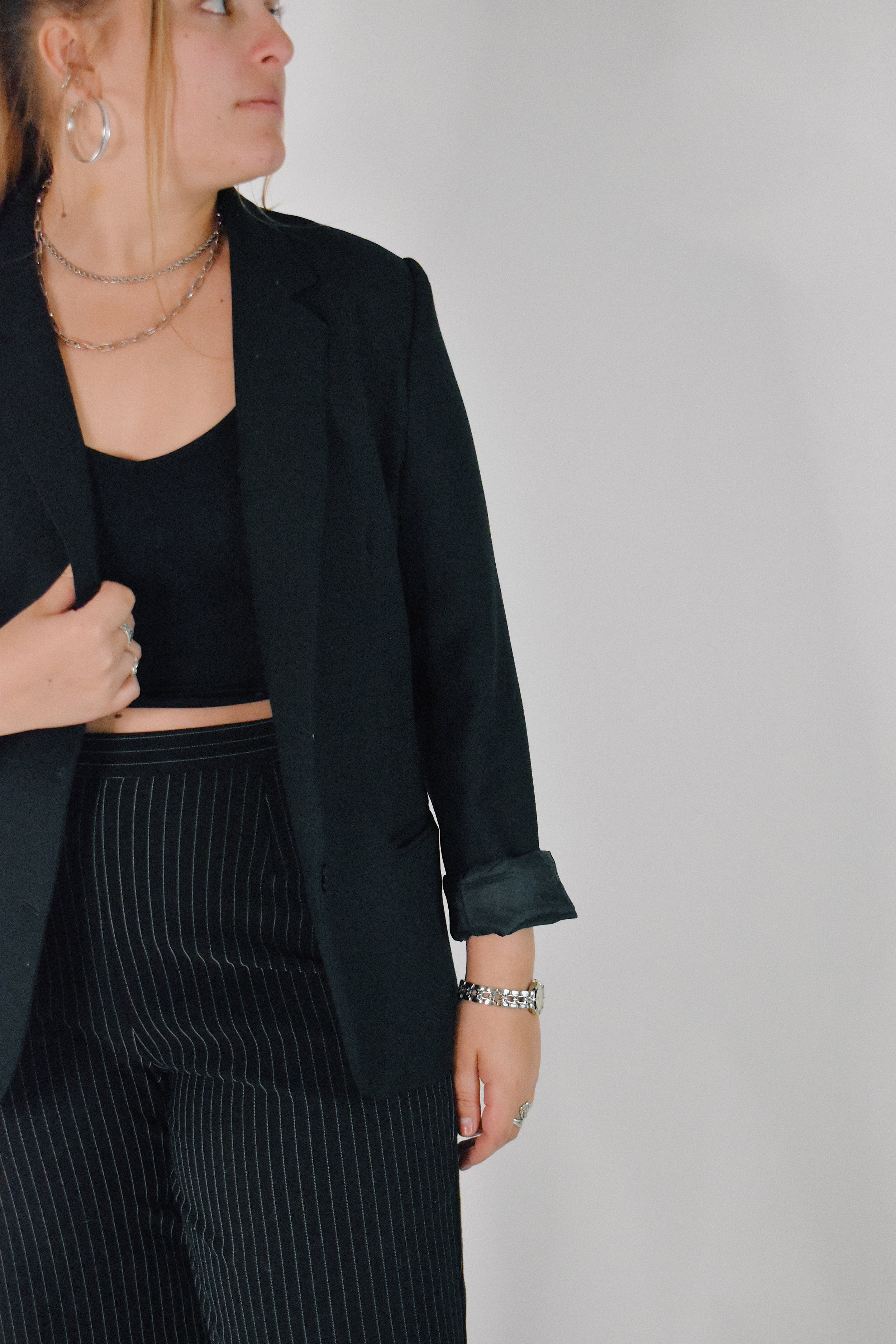The Psychology of Fashion
Written By Camryn Mahnken
Photos By Sarah Nash
Models: Kayla Curry and Camryn Mahnken
Do you feel more powerful when you wear heels or notice you get more compliments on your appearance when you wear a certain blouse? If you agree with either of those sentiments, then you understand the power of apparel. The way we dress impacts the way we feel about ourselves and the impression we give to those around us — in more ways than meets the eye.
Choice of clothing can reflect moods, circumstances, or emotions from the moment the outfit is chosen. When people are in a good mood, they select items that make them feel good, like a bold pair of earrings or a statement blazer. When people feel down, they tend to dress down. This can be different for everyone depending on personal style, but nevertheless, negative moods get showcased in clothing choices that don’t make the wearer feel good. Why does this happen?
Dr. Karen Pine, a psychologist and author of “Mind What You Wear,” a book on fashion’s psychological impact, says her research found “a strong relationship between feeling stressed, anxious or depressed and restrictive wardrobe habits.” When someone is stressed, their outlook becomes narrower, and they focus on their stressors. Interests in things like fashion or appearance might become more limited, thus resulting in a wardrobe of items that don’t benefit the wearer’s mood. People who are experiencing stress or anxiety often choose to only utilize a small percentage of their wardrobe, limiting themselves even further. The added stress of putting together an outfit that makes them feel good can seem like it isn’t worth it, according to Pine’s study.
Similarly, Pine discusses how “introducing clothing variations and new creative combinations [of clothes] can significantly impact [one’s] sense of wellbeing and reduce negative moods.” Wearing pieces that make you feel powerful, attractive, or fun can be a small step towards a happier, more positive outlook. How we feel about ourselves is what matters most, and the way we dress can impact that feeling.
However, fashion’s mental effect does not end with the self. Your outfit is a form of non-verbal communication which serves to reveal something about yourself to the outside world. Research has shown that even the color of your clothing can have an impact on how people view you. Red is seen as a powerful color, which may resemble danger. Dark, neutral tones like black, gray, and navy blue tend to be seen as authoritative or goal-oriented. Blues and lighter grays are associated with a calming effect, while bright magentas or blood oranges can be seen as exciting or demanding.
The “color theory” of fashion has a subconscious element. You don’t tend to realize if you’re feeling intimidated by the woman in the red dress because she’s actually intimidating, or because the color of her dress evokes a provocative and traditionally powerful essence. The psychological impact of your fit can be subtle, but it can also be overt.
Aspects of fashion such as silhouette are also important. Baggy clothes can be perceived as lazy, careless, or ill-prepared at first impression, while more fitted clothing can translate to an attention to detail. A 2013 study showed a group of participants two photos of men wearing different suits. In one picture, the man’s suit was tailored and fit perfectly. In the other, his suit was an average fit and “off-the-peg.” The participants were shown each photograph for three seconds and told to describe the men afterwards. The man in the tailored suit was described as “more confident, successful, and a higher earner” than his counterpart. The man in the ill-fitting suit was seen as “weaker and less influential.” These photos were actually of the same man and the only aspect changing the photos was the clothing he wore: a perfect example of how an outfit can impact how one is perceived.
If the idea of how fashion sends an unintentional message worries you, don’t fret. There are plenty of ways to take control and put yourself in charge of how your wardrobe makes yourself and others feel. For those who want to learn more about how to take ownership of your perception, check out our article on power dressing. Power dressing is a type of style that was born out of necessity for women to establish authority in male-dominated spaces, specifically in politics and business. Now, it’s been modernized as a type of dress that simply makes one feel powerful. It allows the wearer to take control of their appearance by understanding the impact their outfit has and using it accordingly.
Fashion is about expression. A basic understanding of wardrobe psychology allows you to express yourself more accurately to the people around you, and can allow you to better understand how you’re feeling about yourself. Once you know this, you can start to make positive changes in your wardrobe by sporting pieces that make you feel confident and happy. Take control of your own self-perception and your reputation with others by the way you dress. The psychology of fashion runs deep, but you have the tools to use it each time you get dressed in the morning.

